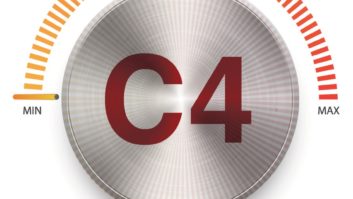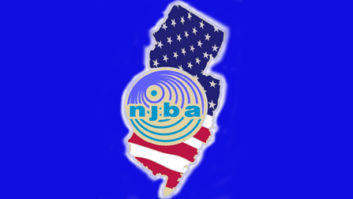The future of U.S. radio is on mobile devices like the Apple iPhone and BlackBerry. Those who grasp this now will survive. Those who don’t will go the way of AM music radio.
That’s the message from Fred Jacobs, president of the radio consulting firm Jacobs Media.
“Today’s iPhone generation is turning to their mobile handsets and PDAs for online audio,” he said. “And there’s lots of them: In the United States alone, there are already 37 million iPhone and iPod touch devices in use, with more being sold every day.”
In response to this trend, Jacobs Media has developed its own iPhone application for radio stations. Called jacAPPS, the software supports a series of radio station-specific players that iPhone users can down for free at iTunes.com.
“So far we are closing in on 700,000 downloads,” Jacobs told RW.
Here’s how jacAPPS puts radio stations on iPhones: Each player connects to whichever station it is configured for. It turns up on the iPhone “desktop” as an icon. Click on it once, and you get free unlimited access to the radio station’s audio feed, on your iPhone.
To date, more than 60 stations and radio personalities are streaming audio to iPhone users via jacAPPs. They get the service for free after paying a one-time upfront fee.

Shown is an iPhone with apps developed by Jacobs Media, and what the apps look like when the user downloads them from the store. JacAPPS is just one of many iPhone radio applications available for download on iTunes.com. Others include AOL Radio (AOL’s in-house content plus material from CBS Radio); Tuner (from Shoutcast.com), Clear Channel’s iHeartRadio (also available online at www.iheartradio.com), Last.fm, NPR/APM’s Public Radio Exchange and Pandora.
Now boasting 26 million subscribers, Pandora allows its members to create their own playlists, featuring artists of their preference. In exchange, Pandora listeners have to tolerate paid advertising in their audio streams, just as they do today on AM and FM.
iPhone model explained
The iPhone delivery model has a few things in common with traditional radio broadcasting … and a few things that are very different.
The first similarity is that the audio delivery system is free to the consumer. In the iPhone world, it is the radio station that covers the streaming costs, as they pay the transmission costs in AM and FM.
The second similarity between conventional and “iPhone broadcasting” is that both provide a range of content options that the consumer can choose among. The difference here is that AM/FM radio listeners only have access to a limited range of local stations, and that the most each station can provide (in the HD Radio world) is two or three program streams each. In the iPhone world, listeners theoretically can access thousands of audio sources from around the globe.
Options such as Pandora mean that listeners do not have to settle for the “one format for many” approach that radio stations — due to their limited bandwidth — are forced to provide.
“Instead, they can listen to whatever kind of music they choose, rather than what some program director chooses for them,” says Pandora CTO Tom Conrad. “No longer do listeners have to put up with content they don’t like. And, in the Internet age, why should they?”
The third striking similarity between conventional and iPhone broadcasting is that both are revenue-driven. AM/FM broadcasters make their money from airing commercials and, increasingly, selling banner ads and other content on their Web sites. IPhone broadcasters have access to these tools, but they can also make extra money through pay-per-listen premium services, upgraded “pro” players that require a payment to download, and click-through music sales, where the station takes a cut of any traffic it diverts to iTunes that results in a successful music sale.
“In revenue terms, iPhone broadcasting offers a lot more possibilities than conventional broadcasting,” Jacobs says.
Where local radio fits in
The core of Fred Jacobs’ approach to iPhone broadcasting is that each station needs its own “beachfront” property on the iPhone’s main applications screen.
“To grab people’s attention and to get them to tune in, you need your icon right there beside Pandora and iTunes,” he said. “Otherwise, you risk being lost in the confusion of all those online stations. I mean, how can anyone work their way through thousands and thousands of stations?”
Not everyone agrees with Jacobs’ position.
Take Radiolicious.fm. It provides iPhone users with a free downloadable player that can select from more than 400 subscribing radio broadcasters and hundred of Internet-only stations, defined by genre and location. Rather than charging a fee, Radiolicious simply requires a small amount of commercial airtime from its members, which it resells to make money from advertisers.
“With Radiolicious, iPhone users can create their own ‘Favorites’ list of stations, including Internet-only broadcasters,” says Doug Raines, its VP of business development.
“Being on a national list gives broadcasters the chance to reach outside their local markets for listeners. This can make a difference if your station is offering something that people want to track, like regional football games.”
Radiolicious includes a GPS-tracking feature in its players. This means that advertisers can specify which Zip codes they want certain text/banner ads to run in.
“We can reach different audiences within the same city with different ads, based on their locations.”

Several public radio organizations worked together to create their own iPhone offering, the Public Radio Tuner nameplate. The service is aimed at allowing users to access live local radio station streams, HD Radio streams and soon on-demand programs. On the non-commercial side, Public Radio Exchange (PRX), NPR, American Public Media and Public Radio International have formed their own iPhone offering under the Public Radio Tuner nameplate. The service is aimed at “allowing users to access hundreds of live local radio station streams, HD streams and soon on-demand programs as well,” says PRX CEO Jake Shapiro.
Although funded by the non-profit Corporation for Public Broadcasting and offered as a free iTunes download, the PRX player and supporting services do have revenue potential.
“We plan to support station and program underwriting on the app in the audio and on the screen,” Shapiro says. “As well, I foresee the day when listeners will be able to donate directly by sending pledges through their iPhones.”
A call to action
There are a few undisputable facts about radio and the iPhone.
First, the younger demographic that radio most needs to cultivate — teens and adults with disposable incomes — are the very people buying iPhones.
Second, the explosion of free iPhone players — free to the user, at least — means that the “free broadcasting model” that AM/FM radio is built upon has effectively been updated for the 21st century.
Third, the very elements that make local radio stand out from its competition — namely local news, weather, traffic, sports and compelling DJs — can work well in the iPhone universe.
“People still want to know what’s going on in their hometowns,” says Fred Jacobs. “If your station does a great job of local broadcasting, then there is no way that an Internet station from Europe or Asia can touch you, especially if your on-air talent is worth listening to. Even Pandora doesn’t have this advantage: It may be customized to the listener’s tastes, but it still has no local content.”
These facts underline the need for radio broadcasters to stake out territory on iPhones, BlackBerrys and indeed all mobile devices.
“Today, there are 4 billion wireless devices in use worldwide,” Jacobs said. “Most of them are not high-end 3G devices like the iPhone, but this will change over time, just as black-and-white TVs were all eventually replaced by color.”
Moreover, as time goes by, “there will be more wireless devices in use, increasingly performing the role of personal communications/entertainment device for their users,” he said. “So should your station stake its claim in the mobile space now? Of course: I don’t see how you can afford not to.”
James Careless is a longtime contributor to Radio World. Comment on this or any article. Write to[email protected].











